Cuba Policy Trip – Day 2
I was wondering about the “entrepreneurial” spirit as it relates to basic promotion of tourism, when I discovered the hotel shop filled with I Love Cuba t- shirts and Che Guevara items – however the store is government owned and run.
Our guide was a bit late this am, as he was trying to secure bottled water for us. When the government store does not have something, you needn’t look at any other store – as they all have the same items. So one week there may be no shampoo anywhere, and the next week it may be in all the stores. This week there is a shortage of bottled water and ice. This is much needed in the bars and restaurants. This year alone there are 300 hundred new restaurants in town. These are one of the few private enterprises and have been a boom to restoration. Most restaurants are in old homes, which are now greatly impoved with the investment.
Below are some photos of a state-run grocery store to get an idea about the shortages.

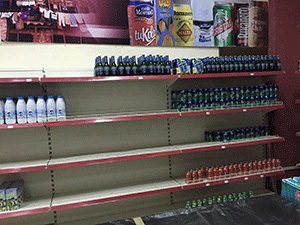
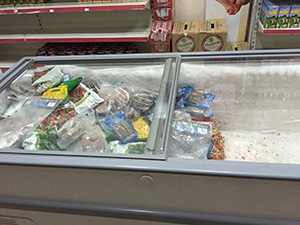
We started the day with a driving tour of Havana, led by architect Pedro Vázquez, the founding member of the National Union of Architects and Engineers of Cuba.
The Main Street from the center to the Bay is similar to Las Rambla in Barcelona. A Kempinski Hotel is currently under construction – with pool and bar on the rooftop. This is expected to take 2 years plus which is Cuban timing. Since little has been built since 1959 there is much repair needed.
A sports stadium:

We went to the hill across from Havana from where the British surprised the city centuries ago. The fortress around the city remains. It was instrumental in protecting the Bay over the centuries. In earlier days there were many treasures in the city.
Regarding housing, there are no homeless people now. With no evictions allowed – approximately 30 percent of the population just don’t pay rent. There is a new law from three years ago which now allows for transfer and sale of houses, however, the Cuban mentality needs to change to understand the meaning of ownership.
The expectation is that the Bay of Havana will change greatly over the next twenty years. The port is being moved to Mariel. The current Bay is polluted and will now be limited to cruise ships. There is also a tunnel under the Bay which will prohibit the post Panamax ships. Our guide said regarding investment – the Americans are “late to the party.” This concern is not about U.S. investment as long the Cuban heritage and laws are respected. We were shown where the new cruise terminal will be, and a new train station with connections to shipping. The plans are there – just waiting for investment. There is old power plant with many proposals, i.e. turning it into a modern art museum like the London Tate Museum. There is a definite similarity to Barcelona and London regarding future planning. The old Esso oil refinery keeps working in the distance.
The architecture is a blend of Baroque to Spanish Moors to Art Deco and Art Nouveau.
The capital building built after the US Capitol building (see photo), is the tallest building in the city. After the revolution, the government moved to another building. Now the government will move back – following restoration. At this point one wing has been restored. There is huge symbolism in the willingness to return to the building. It is also expected that the constitution will be changed cutting down the size of government – so it literally will fit back into the building. I.e., there are five Vice-Presidents.
Havana considers itself the center with same distance from Canada – to South America and same distance to Spain.
President Raul Castro is entertaining some democratic ideas and has encouraged people to openly discuss possible and suggested changes in society. One change allows Cubans to go to hotels. Laws have been changed to own homes, buy cars and travel abroad. Cubans can buy a new Mercedes for the equivalent of U.S. $400,000 but the authorities may ask how they have that much money, so few have dared to do this yet.
There is a slow underground of people getting together and buying portions of old houses thereby eventually owning an entire block which then might eventually be sold for a higher price as a hotel.
Next we visited the Christopher Colon Cemetery which takes up 60 acres and is the largest in the country. It was originally Catholic, but was nationalized. On the main road or “First Class” as it is called, presidents, vice- presidents and wealthy families are buried. After 1959 when many families left, the burial sites were vandalized. Now the government is paying to repair the various locations.
The main square is called Christopher Columbus, as it was expected that his body would be buried there. Many families had huge mausoleums built hoping to be buried next to Columbus.
One of the few “ordinary people” buried in “First Class” was Constantino “Constante” Rigbalaigua who presided over the El Floridita Bar in Old Havana on Calle Montserrat. This is where Papa Hemingway sat on the far left side of the bar drinking double rum daiquiris. Daiquiri is a small town in eastern Cuba, where an American run mine operated. The employees were sent a container of rum every month and they started mixing it with lime and ice, hence the name of the cocktail.
The tallest mausoleum honors a group of firefighters who were called to a burning building, without being informed the building contained fireworks.
Burial costs are 100 pesos for the entire burial process. There are 40 funerals a day. It is not possible to have an individual mass in the chapel, so there is one mass on Sunday for those buried the week prior.
Following the visit to the Cementerio Colón, the group paid a brief visit to the Taller de Gráfica Experimental, a printmaking and lithographic workshop, serving also as an art institution, school, and studio.
We then proceeded to have lunch at Doña Eutimia Paladir, known as one of the top 100 restaurants in the world by a 2012 Newsweek article. It had a very warm and welcoming environment and some delicious Cuban food. According to InsightCuba, the menu is dominated by the three P’s that are prevalent in Cuban cuisine “pollo, puerco, y pescado (chicken, pork and fish).”
After the lunch, we went on a walking tour of the Old City.
The highlight for me was the visit to the Catedral de San Cristóbal, among the best examples of Baroque architecture in Cuba. Designed by Italian architect Francesco Borromini and completed in 1787, the cathedral is one of the oldest in the Americas. It formerly contained the remains of Columbus from 1795-1898, when they were relocated to the Seville Cathedral in Spain. The purposely asymmetrical, ornate exterior was built using coral rock from the Gulf of Mexico. The interior, however, was fairly simple in comparison, although it did have impressive marble floors, stone pillars, and multiple chapels. Many of the formerly ornate features were removed from the interior in the 19th century (Lonely Planet).
Our walking tour included the Plaza de San Francisco, Plaza Vieja, the Plaza de la Catedral, and the Plaza de Armas. Old Havana was formerly one of the most major shipbuilding centers of the 16th century, largely due to its strategic location for incoming Spanish conquistadores on their way to the Old World. Although Havana certainly is its own city, I see many similarities to New Orleans and Barcelona.
The Plaza de San Francisco originally served as a busy trading hub, to both store goods arriving by ship from the harbor and to provide water to the ships. It also contained a variety of merchandise for sale in carts.
Now, over 400 years later, it is still a welcome sight to those arriving by boat, although it now dominated by cafes, shops and of course the Basilica Menor de San Francisco de Asis, a stunning 16th century church. There is a statute outside of Junipero Serra who stopped in Cuba, then sailed on to Mexico prior to traveling north to California.
The Plaza Vieja (Old Square) is a colorful open space featuring colonial architecture. This UNESCO World Heritage Site is the former location of bullfights, fiestas, executions and processions.
Our also included seeing the local market:
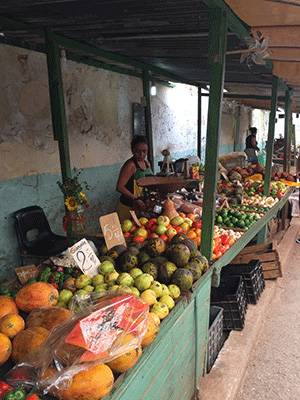
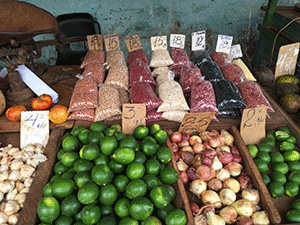
And some local housing:
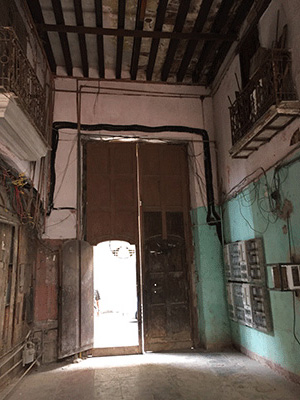
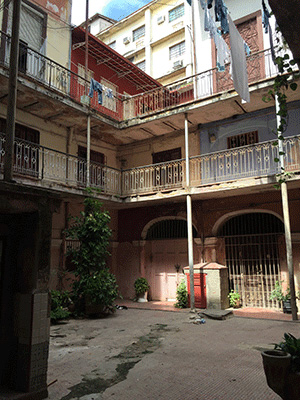
During our trip, there was a heat wave with temperatures in the 90’s and the humidity the same. The week following there were intense rains which brought, massive flooding.
Three buildings collapsed and two people were killed. Following the rains, the heat will hasten the deterioration of the old building materials and this is when buildings collapse. Our guide indicated he walked very carefully following rains.
Here is an example of a home which had collapsed last week:
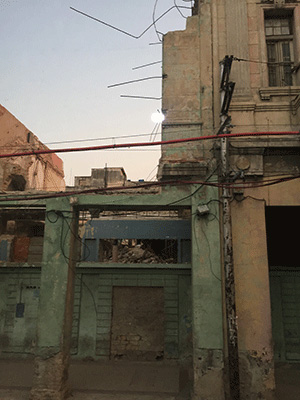
After the enlightening tour, we paid a visit to the Lizt Alfonso Academy, a female-led dance company to meet with the school’s young dance ensemble. We are going to have the opportunity to watch a live performance by the Litz Alfonso Company on Friday evening.
This visit was focused on getting to know the students to hear how their experience at the academy was impacting their lives.
